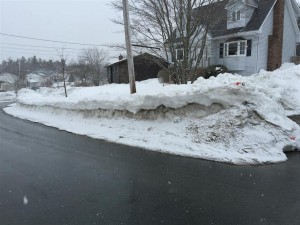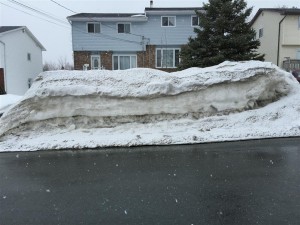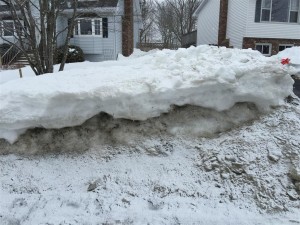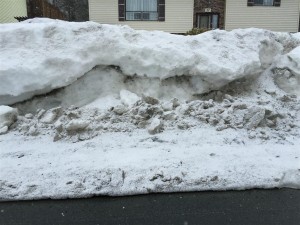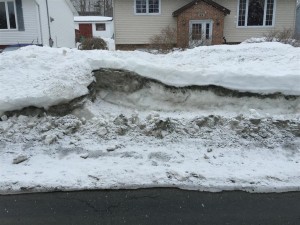Abstract
Forensic engineering as routinely practiced in Eastern Canada is different from what you might imagine. Not big, catastrophic failures and tragic accidents as reported in the press. Rather, often enough, quite small problems unworthy of notice to the public at large. Nor forensic engineering as ideally described in text books. Rather, a little different and with some warts and shortcomings.
In the following, I describe what I have experienced over the years as a professional engineer specialising in civil engineering and geotechnical engineering.
Things break and fall down and people have accidents. Civil litigation sometimes results. Professional engineers are retained to find out why the thing broke or the accident happened and explain in written reports to the justice system – as such, assuming the role of a forensic engineer.
Lawyers retain us – those of us with certain key attributes, on behalf of the plaintiff or defendant. Occasionally this is done when the merits of the case are being assessed but too often months or years later.
I explain how civil engineers can personally investigate many of the problems that develop in Eastern Canada. They also sometimes function as lead investigators – `generalist“ engineers, and retain other specialists when they are not qualified for the problem. There are few experts in Eastern Canada who investigate the same type of problem day in and day out.
(There’s a bulleted Summary at the end of this item, in addition to the abstract)
Our built environment doesn’t always work as it should – things break and fall down. People sometimes get hurt in this environment too
Everything in our built environment is expected to be safe and to operate as designed.
But when things do not function properly, such as:
- a poorly maintained structure,
- foundation settlement of a swimming pool or building,
- a bridge failure,
- earthworks and landslides,
- a flood,
- vibrating buildings,
- traffic and slip and fall accidents,
- a truck fuel oil spill,
- a leaking roof, or
- a wet basement
we are reminded that things do not operate continually or forever. And that things are sometimes not designed and constructed properly nor are they completely safe. (Refs 1, 2 and 3)
Civil litigation sometimes results when this happens.
Engineers explain to the justice system why things break and fall down
Professional engineers are often retained by counsel for the plaintiff or defendant to investigate the cause of problems like these. Also to identify and explain the associated technical issues to plaintiffs, defendants, counsel, judges, and juries. These parties are being asked more and more to believe and rely upon the opinions of experts. As such, professional engineers practise as forensic engineers either as consulting experts or testifying experts. (Refs 1 and 4)
We explain in well written reports, seldom in court
Today, after we complete our forensic investigation, we increasingly present our findings and opinions in a report according to civil procedure rules like Rule 55 in Nova Scotia. Professional engineers seldom go to court today since the advent of rules like this. (Ref. 4) Nevertheless, we still do our work in the event this will be necessary.
How we are retained, including the warts of the process
We are most often retained when a lawyer calls asking to describe a problem, doing this, and then responding to our questions about the failure or accident in our need to assess if we are qualified. Counsel would most likely have learned of us by word of mouth or as a result of having some profile in the area.
Too often we are retained months or years after an action has been started rather than at the time the merits and investigative costs of a case are being evaluated. But this is changing as lawyers learn of the benefits of retaining an expert early – serious cost benefits and better service to the justice system and the injured party. (Refs 5 and 6)
Key attributes of a qualified forensic engineer
We would most likely be qualified as an engineer to investigate the failure or accident if we had the following key attributes: (Ref. 1)
- Suitable education
- Training
- Experience
- Skill, and,
- Knowledge
And performed our work,
- Accurately
- Objectively, and,
- In a professional manner
Another key attribute: Excellent report writing skills
It’s also absolutely essential today in Eastern Canada, in light of new civil procedure rules, that an engineer have excellent report writing skills – and actually bulletproofs his report. (Ref. 7) Where excellent testifying skills were a key requirement in the past, it’s report writing skills today.
Fees for forensic engineering services
We charge for our services according to a published schedule of fees on our website. Contractors in Eastern Canada who are retained by a forensic engineer to do certain specialized testing and construction work are charged at cost.
Failures and accidents are small to medium sized and diverse in nature, and experts are not always available in the area
In general, problems in the built environment in Eastern Canada are diverse in nature with many and varied technical issues – seemingly no two are exactly alike. (Ref. 8) They are also small to medium sized – seldom collapses, fortunately, and certainly not newsworthy. Experts in the specific problem are not always available in this area.
For example, a lawyer in the U.S. enquired about finding an expert on string. He was advised that perhaps there may not be a “string expert” at large, and that perhaps a specialist trained in microscopy and hemp manufacturing technology may be of assistance. (Ref. 1)
Closer to home, there are probably no “step ladder with bent leg” experts in Eastern Canada either, nor slip and fall experts where the victim was walking backwards, experts in the bio-degradation of old oil spills by natural attenuation, or experts in vibrating buildings.
There are experts in Eastern Canada – civil engineers who know more than the lay public about how to investigate why something broke and fell down or an accident happened – but not necessarily experts who investigate the same kind of problem day in and day out.
One engineer per problem
In Eastern Canada, one professional engineer usually works on all aspects of the forensic investigation either because of some specialized knowledge, or because he is able to figure out the problem by applying the scientific method and following established protocols. (Ref. 9)
The “generalist” engineer
Some cases, because of the nature of the problem, involve the services of a “generalist” engineer or lead investigator rather than a “specialist” engineer. The engineer advises the lawyer on the types of specialists needed for the team, selects them, and coordinates their activities. (Ref. 1)
A professional engineer functioning as a lead investigator must have sufficient technical knowledge of the problem to recognize his technical shortcomings and retain qualified assistance when the failure or accident investigation requires expertise he doesn’t have. (Ref. 1)
For example, I investigated the cause of a soil-steel bridge failure on one occasion that permanently disabled a car driver. At different times during my investigation I retained the services of a land surveyor, a hydrologist, two engineers experienced with corrugated steel structures – one in Ontario, the other in the U.S., and a metal detectorist. These specialists took part in the investigation in addition to my own specialties in civil engineering and geotechnical engineering.
Summary
That’s the nature of forensic engineering practice as I have experienced it in Eastern Canada:
- We investigate and explain why the built environment sometimes breaks and falls down, and why people sometimes have accidents
- We explain why the thing broke, and the relevant technical issues, in a written report to the justice system, hence the label “forensic engineering”
- Lawyers retain us to do this, those of us with certain key attributes
- Most of the problems we investigate are small to medium sized, not catastrophic and newsworthy
- The cause of most problems can be figured out by an experienced civil engineer
- Sometimes he must wear his “generalist” engineering hat – lead investigator hat, and retain one or more specialists to investigate issues he’s not qualified to do
References
- Lewis, Gary L. ed., Guidelines for Forensic Engineering Practice, 2003, American Society of Civil Engineers (ASCE)
- Greenspan, Howard F., et al, Guidelines for Failure Investigation, 1989, American Society of Civil Engineers (ASCE)
- Janney, Jack R., Guide to Investigation of Structural Failures, 1979, 1986, American Society of Civil Engineers (ASCE)
- How experts are retained in civil litigation is changing and the changes are good for counsel and the justice system Posted May 1, 2014 http://www.ericjorden.com/blog/2014/05/01/how-experts-are-retained-in-civil-litigation-is-changing-and-the-changes-are-good-for-counsel-and-the-justice-system/
- Stockwood, Q.C., David, Civil Litigation, 2nd ed. 2004 Thompson Carswell, Toronto
- Please, Counsel, retain an expert “early in the life of the case” Posted March 27, 2014 http://www.ericjorden.com/blog/2014/03/27/please-counsel-retain-an-expert-early-in-the-life-of-the-case/
- Mangraviti, Jr., Esq., James, J., et al, How to Write an Expert Witness Report, 2014, SEAK
- What do forensic engineers investigate in Atlantic Canada? Posted October 9, 2014 http://www.ericjorden.com/blog/2014/10/09/what-do-forensic-engineers-investigate-in-atlantic-canada/
- Steps in the forensic engineering investigative process with an Appendix on cost, Posted July 15, 2013 http://www.ericjorden.com/blog/2013/07/15/steps-in-the-forensic-engineering-investigative-process-with-an-appendix-on-costs/

